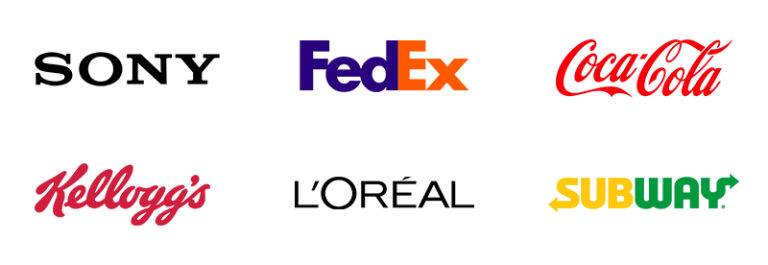

Colonel Sanders) illustrates its legendary founder. For example, many food packaging companies use mascot logos.īusinesses use mascot logos as symbolic brand ambassadors. Such logos are commonly used when your target audience includes families and children. They’re usually playful and cartoonish to show that the company’s behind those logos are warm and friendly. Mascot logos use illustrated characters to represent a business. The brandmarks for Apple and Target are two good examples. If your business name represents a real object, a brandmark of that object could be a powerful reminder.So, be sure you have a marketing budget to support your brandmark logo. Brandmark logos must be supported by marketing and branding campaigns for your target audience to connect the logo to your brand.Here are 13 questions that will help guide your search and help you create a strong identity for your business. What colors best suit my brand’s image?.Do I want to evoke people’s emotions, and if so, how?.

Should I use an image that directly represents my company name?.You can start by asking yourself these questions: Brands like Nike, Apple, Gucci all have simple brand mark logos that are easy to identify and remember. This is not the time to create complex brand marks. So take the time to pick a distinct mark that suits your business.Īnd remember that simple is always better. The mark (the image you choose for your brand logo) will represent your business. As a result, you’ll need to spend more on marketing to create brand awareness for your company. Because of language and cultural differences, brand mark logos help you create brand consistency across many markets without requiring people to read words in a specific language.īrandmark logos can be challenging for new or less established businesses because strong brand recognition is essential to making your logo memorable. Such logos are essential if your business is global. Brandmark logosĪ brandmark logo uses an icon or image (sometimes called pictorial marks or logo symbols) to represent the brand.Īpple, Twitter, Pepsi, and Starbucks have recognizable brand marks worldwide. Start the quiz - completely confidential and free! 2. Many expensive products use monogram logos. If you have an upscale product that appeals to a higher-end crowd.If you have a long business name that’s difficult to print on smaller objects or difficult to remember.Additionally, the colors must be simple, complement the font, and be easy on the eyes. If a customer or prospect can’t easily read your monogram logo, they won’t know who you are. The font you use must be clear and easy to read. Two essential things to consider when creating a monogram logo are font style and color. Such logos work well in specific industries like clothing but are less popular in other industries. And if you’re rebranding an existing business, consider whether a monogram logo fits your target market. Look at those examples for inspiration if you’re starting a business and considering a monogram logo. Luxury fashion brands Louis Vuitton, Chanel, and Gucci proudly display their classic monogram logos. Many popular brands, including CNN, HP, and KFC, use monograms.

Monogram logos are easy to remember because they often use unique font styles and the brand’s name or initials. It’s a descriptive logo that directly represents the brand’s identity. And while each style is distinctive, not all styles work for every type of business or organization.Ī monogram logo (also known as a lettermark) shows a brand’s initials. Logos can be divided into two main types: descriptive and nondescriptive logos.ĭescriptive logos reflect the company’s name, while nondescriptive logos are abstract and often hint at the products or services a business sells.Īdditionally, there are different logo styles. To create the perfect logo that captures the essence of your business, you must consider colors, shapes, appeal, price, and how the overall logo design fits your brand. So, it’s crucial to find the most effective logo to represent your brand uniquely. People quickly forget your business when your company logo resembles hundreds or thousands of other logos. It’s what people often see before they see your products or services. The logo is the face of your business and your brand ambassador. Your company logo can make or break your business. Many business owners forget to create a brand strategy and struggle to grow their business because their branding is weak. This is a costly mistake because poor branding will hurt your business. People starting new businesses often make a critical mistake: they try to take a shortcut and find a template or generic logo from an online logo store to save money. Will your business idea succeed? Take our quiz - completely confidential and free!


 0 kommentar(er)
0 kommentar(er)
